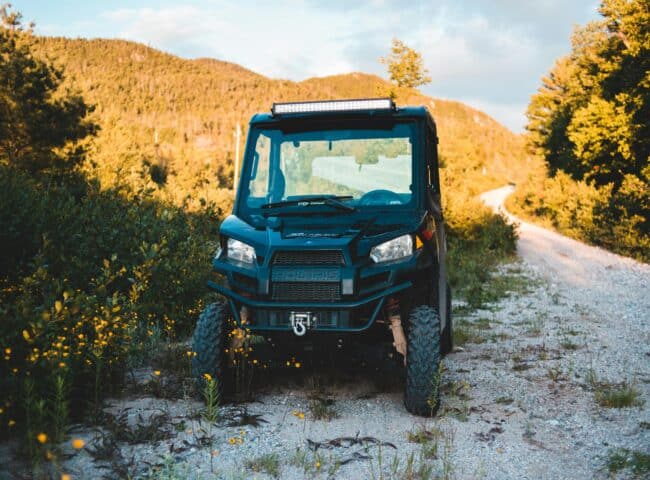Powersports warranties may seem like a promise of peace of mind, yet they come with specific boundaries. Are you aware of what’s not covered? Uncover the common exclusions in powersports warranties here, and learn why certain damages, maintenance needs, and modifications unexpectedly won’t be covered. This insight arms you with the knowledge to navigate your policy—and the potential expenses outside of it—with confidence.
Key Takeaways
- Routine maintenance, wear items, and damages from misuse or environmental factors are typically not covered under powersports warranties.
- Extended warranties offer various coverage levels beyond standard warranties and may include protection for wear and tear, essential components, or additional benefits like roadside assistance.
- Adhering to vehicle maintenance schedules and understanding the claims process are imperative for maximizing the benefits of warranty coverage and avoiding potential claim denials.
Navigating the Fine Print: Typical Powersports Warranty Exclusions
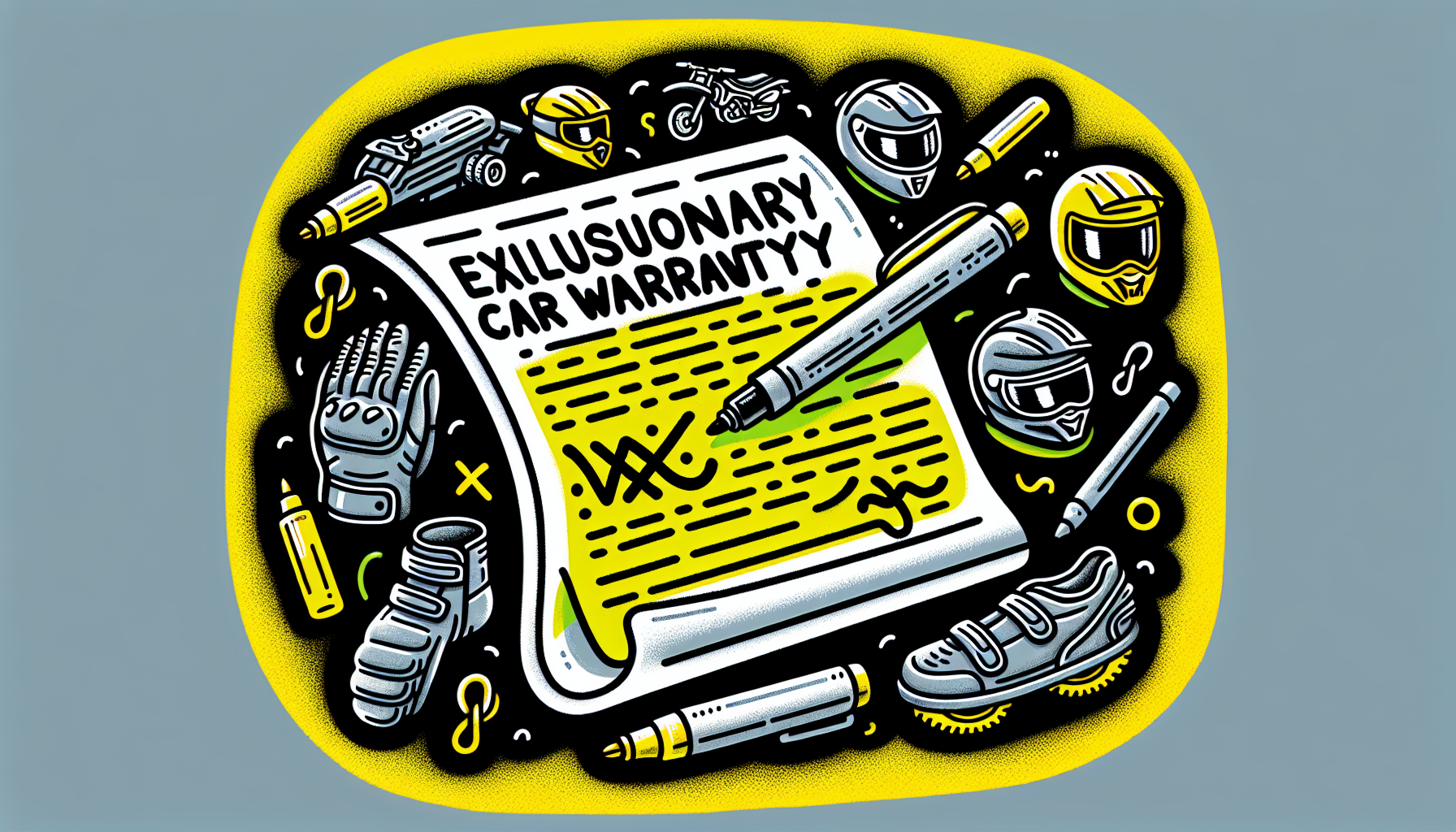
Car warranties, including new car warranty, can be a lifesaver, but they certainly don’t cover everything. Most vehicle owners overlook the fine print, leading to shock and disappointment when a repair isn’t covered. The truth is, most car warranty typically exclude certain items, systems, or damages from coverage.
For instance, routine maintenance services, wear and tear items, and the use of non-genuine parts or unapproved fluids are usually not covered. Moreover, damage stemming from neglect, misuse such as overloading or racing, environmental factors like rust or corrosion, and modifications not approved by the manufacturer are generally excluded from warranty coverage.
Routine Maintenance and Wear Items
Routine maintenance and wear items refer to the usual degradation a vehicle undergoes with time. This includes things like oil changes, filter replacements, and regular inspections. Similarly, wear items like brake pads, tires, and clutch components, which are considered consumables, are typically excluded from warranty coverage on powersports vehicles. This means that the cost of replacing these items will generally be your responsibility, not that of the warranty provider.
Damage from Environmental Factors

Most powersports warranties also exclude environmental damages such as rust, corrosion, and paint deterioration. Why? Well, rust and corrosion are often the result of natural elements like salt and moisture, which are generally considered out of the warranty provider’s control.
Moreover, body and paint items, including soft trim, glass, and plastic lenses are frequently not covered by warranty due to their susceptibility to environmental damage.
Modifications and Aftermarket Parts
Powersports enthusiasts often find the idea of enhancing their vehicle’s performance with aftermarket parts or modifications irresistible. But beware, these changes can come with a cost. Most manufacturers do not cover damages attributed to the use of aftermarket parts or modifications that they have not approved, as these unauthorized changes can interfere with vehicle performance and safety.
So, before you go ahead and install that new exhaust system, consider the potential impact on your warranty coverage.
The Reality of “Wear and Tear” in Powersports Warranties
The term ‘wear and tear’ is commonly used in warranty language. But what does it actually mean? Simply put, wear and tear refers to the normal degradation of a vehicle’s parts and furnishings through use. It’s not a sign of unsatisfactory quality, but rather an expected result of using the vehicle.
Nevertheless, keep in mind that warranties usually don’t cover problems resulting from normal use or ‘wear and tear’, which can affect mechanical parts including cabin trim or furnishings.
Defining Normal Wear
In the context of vehicle warranties, ‘normal wear and tear’ refers to the anticipated degradation of vehicle parts through regular use. This includes parts like:
- tires
- brakes
- clutches
- consumable items such as spark plugs and filters
It is not considered a sign of unsatisfactory quality but rather a natural result of using the vehicle.
Some vehicle parts, such as clutches, are designed with an expected lifespan, after which routine replacement is considered part of normal vehicle maintenance.
When Wear Becomes an Issue
Though wear and tear are inherent in vehicle ownership, they pose a concern in warranty coverage when routine use leads to damages that are not covered by manufacturers or aftermarket service contracts. For example, extended warranties typically cover mechanical breakdowns not resulting from wear and tear, marking a clear distinction in coverage terms.
Hence, you should take into account your vehicle’s usage and common component failure modes when choosing a warranty coverage that matches the expected wear.
Accidents and Negligence: Understanding Your Coverage Limits
Warranties, including factory warranties, aim to cover unexpected breakdowns and defects, but they don’t include damages resulting from accidents, natural incidents, or negligence. This implies that any repairs related to an accident or natural disaster could nullify the factory warranty coverage.
To safeguard against all potential situations, it’s advisable to have a comprehensive motorcycle insurance policy alongside your warranty.
Accident-Induced Damages
In the unfortunate circumstance of an accident, one might think that the warranty would cover the damages. However, car warranties generally exclude coverage for accident-related damages, as these are typically handled by car insurance.
Therefore, for protection against accident-induced damages, such as collisions or environmental impairment, the appropriate solution is insurance rather than an extended warranty.
The Impact of Negligent Behavior
Negligence, like not adhering to the vehicle’s maintenance schedule, can also result in warranty claim denials. Warranty providers consider regular maintenance as an owner’s responsibility, and neglecting this can lead to issues with your warranty coverage.
Therefore, adhering to a vehicle’s maintenance schedule is critical to avoid claims being denied on the grounds of negligence.
The Exclusion List: Specific Components and Situations to Watch For
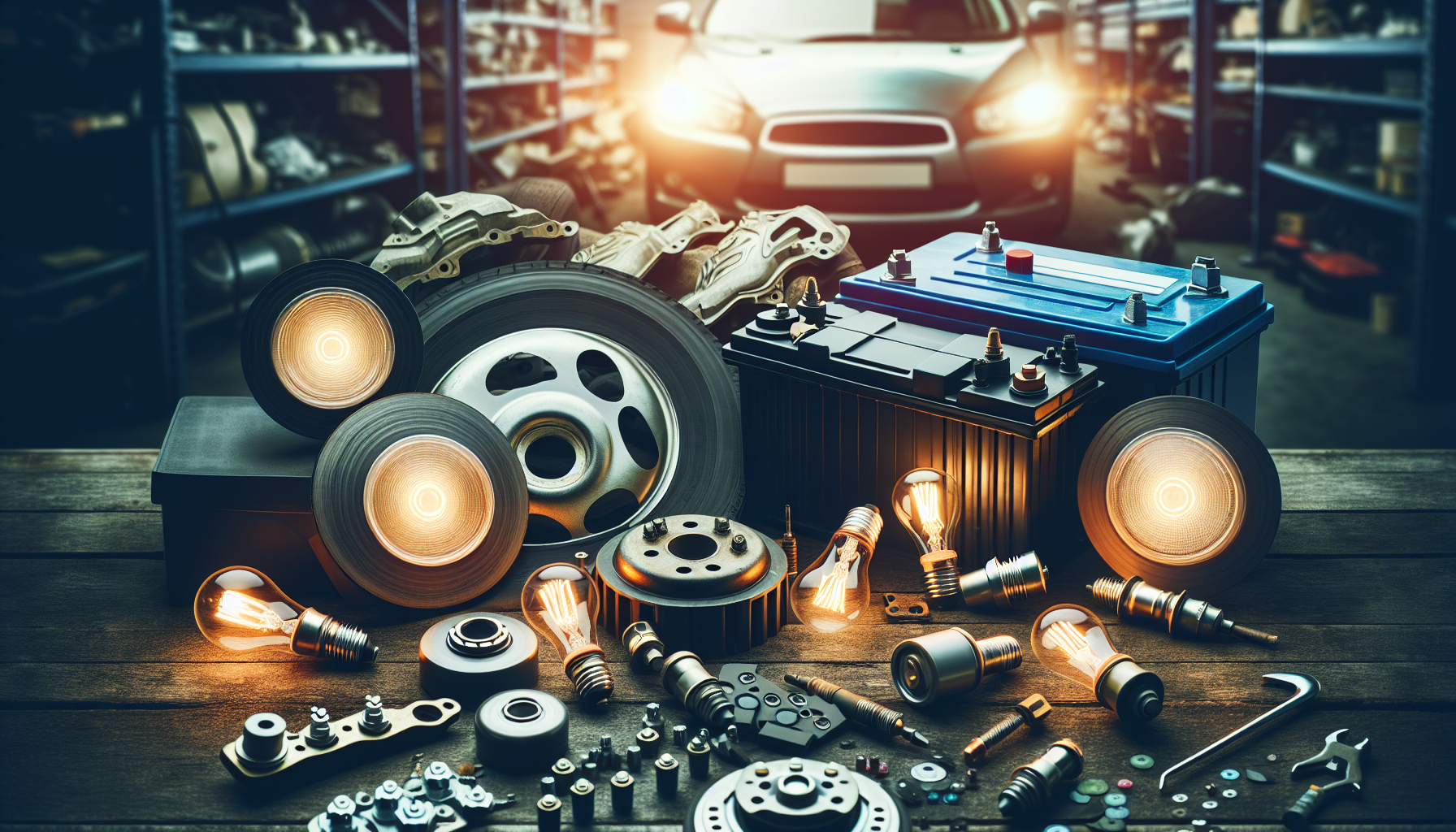
A warranty can provide significant protection, but it’s essential to know that each warranty has an exclusion list. This list specifies the components and situations that are not covered under the warranty. It’s crucial to familiarize yourself with this list to avoid future disappointments and to ensure that you’re making the most out of your warranty coverage.
Excluded Components
When purchasing a product, it’s important to be aware of the exclusionary warranty, as the exclusion list often includes certain components that are not covered under the warranty. These components often include wear and tear items, body and paint items, and specific parts like batteries and light bulbs.
Therefore, it’s vital for consumers to review the exclusions list of their warranty agreement to know which parts and components are not covered.
Situations Voiding Warranty
In addition to the excluded components, certain situations can also void the warranty coverage, making it an exclusionary car warranty with exclusionary coverage. These situations include:
- Racing or competitive driving
- Misuse of the vehicle for purposes like overloading or improper off-road use
- Neglecting proper maintenance
- Unauthorized repairs or service work
These actions can lead to a voided warranty.
Therefore, it’s crucial to avoid these situations to maintain the validity of your warranty coverage.
Extended Warranties and Additional Protection Plans
A standard warranty provides a certain degree of protection, but there may be times when you desire more. This is where extended warranties and extra protection plans become relevant. These offer additional coverage that extends beyond the original warranty period and can be particularly beneficial for used vehicles that lack manufacturer’s warranties.
Exploring Extended Warranty Options
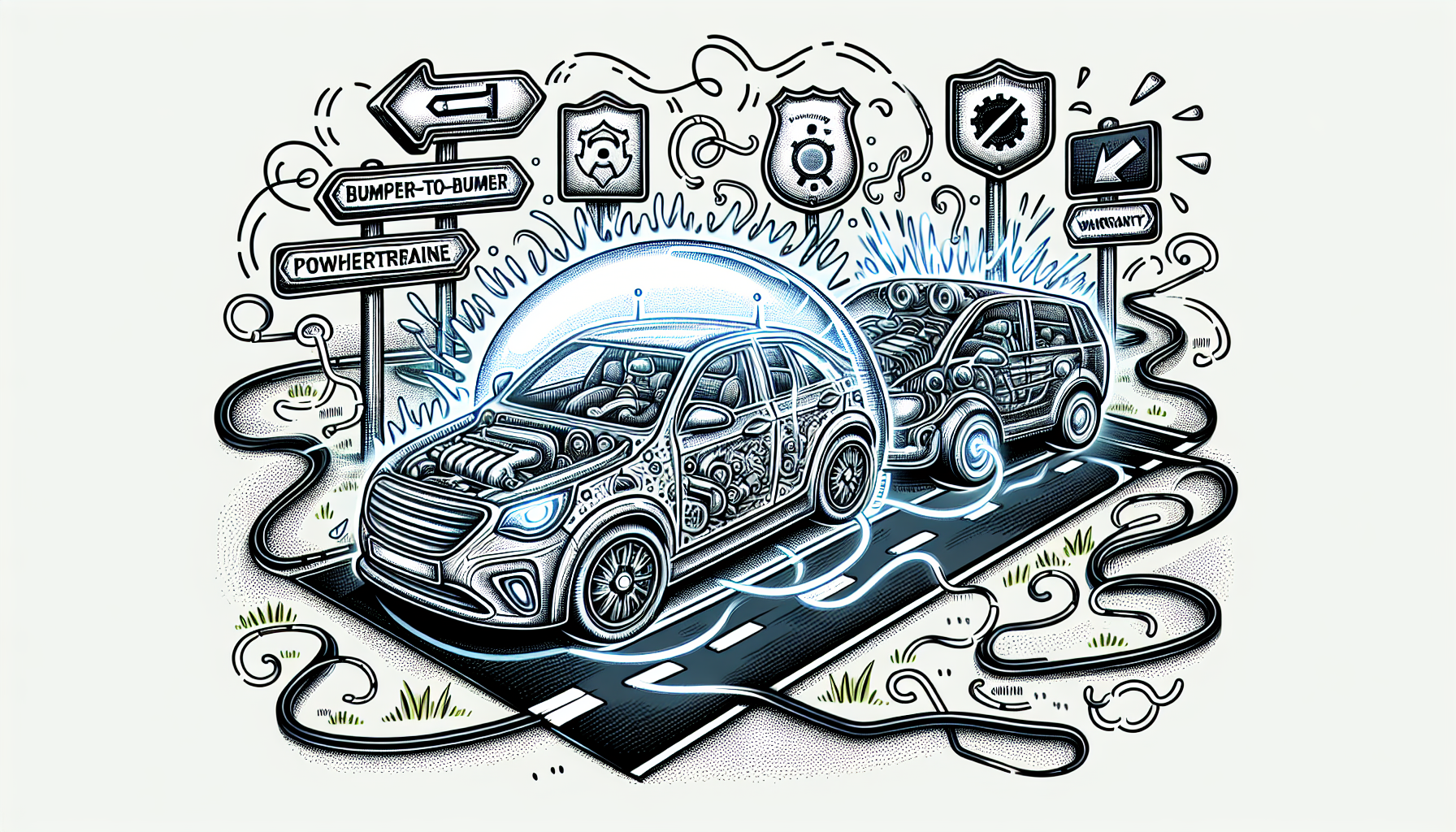
Extended warranties come in a variety of options, each with distinct coverage levels. Some common types of extended warranties include:
- Bumper-to-bumper extended warranties: These offer comprehensive coverage encompassing most major vehicle systems, often referred to as a bumper to bumper warranty.
- Powertrain extended warranties: These specifically cover essential components like the engine, transmission, and drive axles.
- Wear and tear extended warranties: Some providers offer plans that include coverage for wear and tear parts.
Therefore, it’s important to evaluate your needs and choose the option that offers the best coverage for you.
Benefits of Protection Plans
Protection plans, in addition to extended warranty coverage, offer additional benefits for a more seamless ownership experience. These benefits can include trip interruption service, rental car reimbursement, and 24/7 roadside assistance. Coverage includes protection beyond the basic warranty coverage, ensuring peace of mind for vehicle owners.
So, while considering warranty options, don’t forget to consider these additional benefits that can further enhance the value of your purchase.
Making an Informed Decision: What to Consider Before Purchasing a Warranty
Selecting a warranty requires careful consideration. Several factors need to be evaluated to make an informed decision that best safeguards your investment. From assessing your financial situation to understanding the provider’s reputation, it’s crucial to do your homework before finalizing your purchase.
Assessing Your Needs and Usage
The way you use your vehicle and the environmental conditions it encounters are crucial factors in selecting warranty coverage. Some factors to consider include:
- Frequent starts and stops
- Long-distance travels
- Heavy load carrying
- Exposure to harsh environmental conditions
These factors can all increase the risk of vehicle breakdowns and influence the type of warranty required, especially as a vehicle’s factory warranty expires.
Hence, you should evaluate your unique needs and compare them with the warranty plan details to determine if the plan provides cost-efficient coverage for potential repairs.
Cost Effectiveness of Warranty Coverage
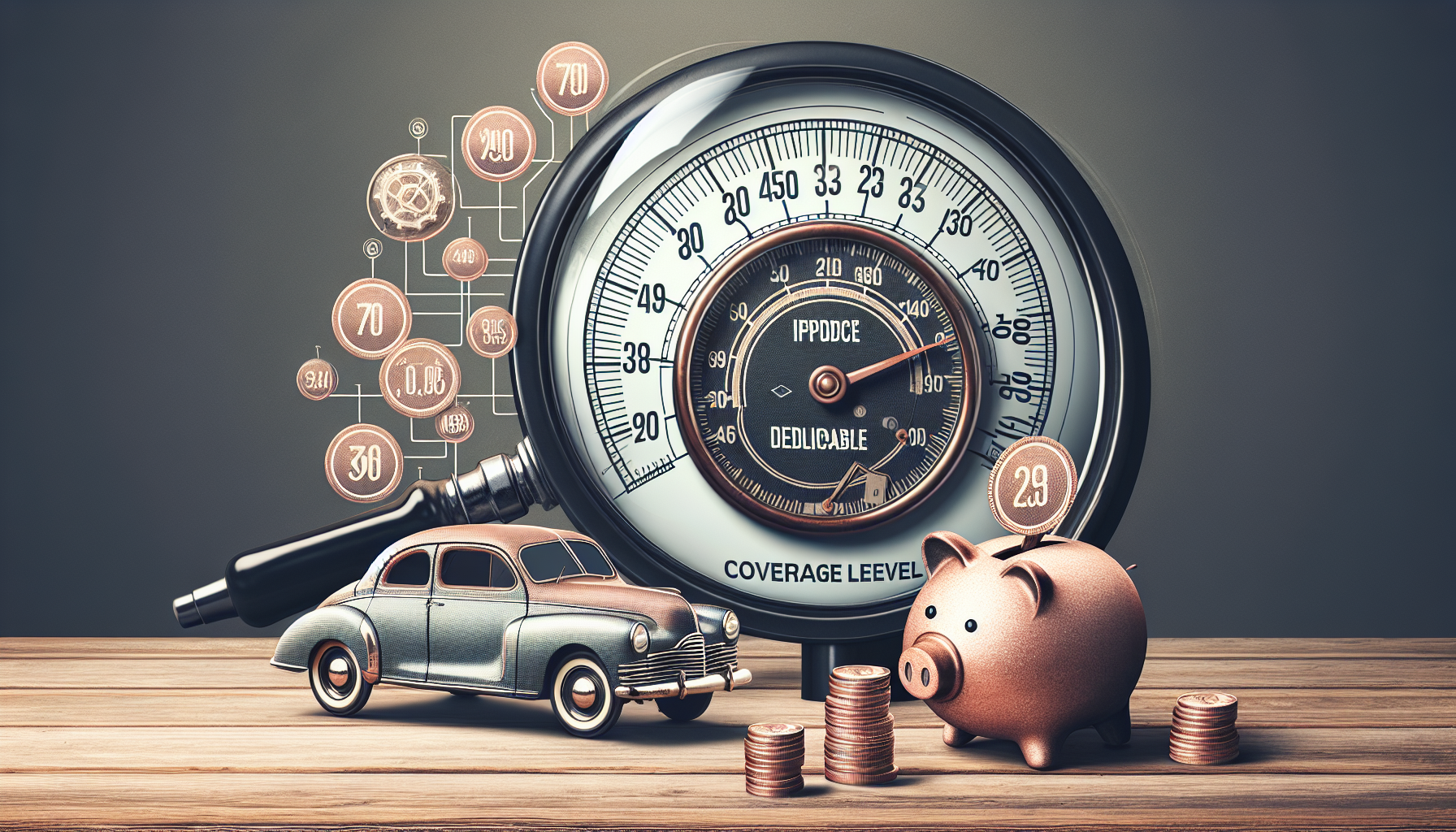
Another vital factor to consider is the cost-effectiveness of a warranty. The cost-effectiveness of a warranty can be influenced by several factors, including:
- The age and mileage of the vehicle
- The comprehensiveness of the warranty plan
- The length of coverage
- The deductible amount
It’s crucial to evaluate these factors and ensure that the warranty offers the best value for your money.
Remember, true savings from a warranty are realized only if needed repairs fall under the coverage terms.
Maximizing Your Warranty Experience
Maximizing your warranty benefits requires adherence to the maintenance schedule and understanding the claims process thoroughly. Skipping routine maintenance can result in the forfeiture of warranty coverage or certain benefits. Therefore, understanding your responsibilities as a vehicle owner can help you make the most of your warranty and avoid potential pitfalls.
Navigating the Claims Process
In the realm of the claims process, being knowledgeable gives you an advantage. Reading the warranty contract thoroughly before filing a claim can help ensure a smooth process and prevent claim denials. It’s also essential to receive authorization from the warranty provider before any repair work is done.
And remember, if you notice a defect or issue, don’t delay in utilizing your warranty coverage.
When to Use Your Warranty
Understanding the appropriate time to use your warranty can also aid in maximizing its benefits. The warranty should be utilized for inherent defects and when components malfunction under normal operation. However, it’s important to understand the exclusions and avoid situations that could potentially void your coverage.
So, before you file that claim, take a moment to review the warranty terms and ensure that the situation warrants a claim.
Summary
We’ve journeyed through the intricacies of powersports warranty exclusions, understanding the significance of routine maintenance, wear and tear, environmental factors, and unauthorized modifications on warranty coverage. We’ve also explored extended warranties, protection plans, and the factors to consider before purchasing a warranty. By understanding these aspects, you can make an informed decision that best suits your needs and maximizes your warranty experience. Remember, a warranty is a safety net for your investment, but it’s up to you to ensure that it provides the best coverage for your unique needs.
Frequently Asked Questions
What are 5 common acts that void your vehicle’s warranty?
Abusing the vehicle, neglecting routine maintenance, racing or off-roading, certain aftermarket modifications, and natural disasters like flooding or fire can all void your vehicle’s warranty. Always be mindful of these actions to ensure your warranty remains valid.
What are the exclusions from warranty coverage?
Warranty exclusions often include damage from natural disasters, accidents, misuse, neglect, normal wear and tear, cosmetic damage, and routine maintenance. Be sure to review your warranty for specific exclusions.
What is considered as “wear and tear” in warranty context?
In a warranty context, “wear and tear” includes the normal degradation of vehicle parts and consumable items through use, such as tires, brakes, clutches, spark plugs, and filters.
What is an extended warranty and what does it cover?
An extended warranty extends the original warranty period and offers coverage for certain repairs after the manufacturer’s warranty expires. It may include essential components like the engine, transmission, and drive axles.
What factors should I consider before purchasing a warranty?
Before purchasing a warranty, consider factors such as your financial situation, vehicle usage, environmental conditions, comprehensiveness of the warranty plan, length of coverage, deductible amount, reputation of the warranty provider, and the terms and conditions of the warranty contract. These factors will help you make an informed decision.


